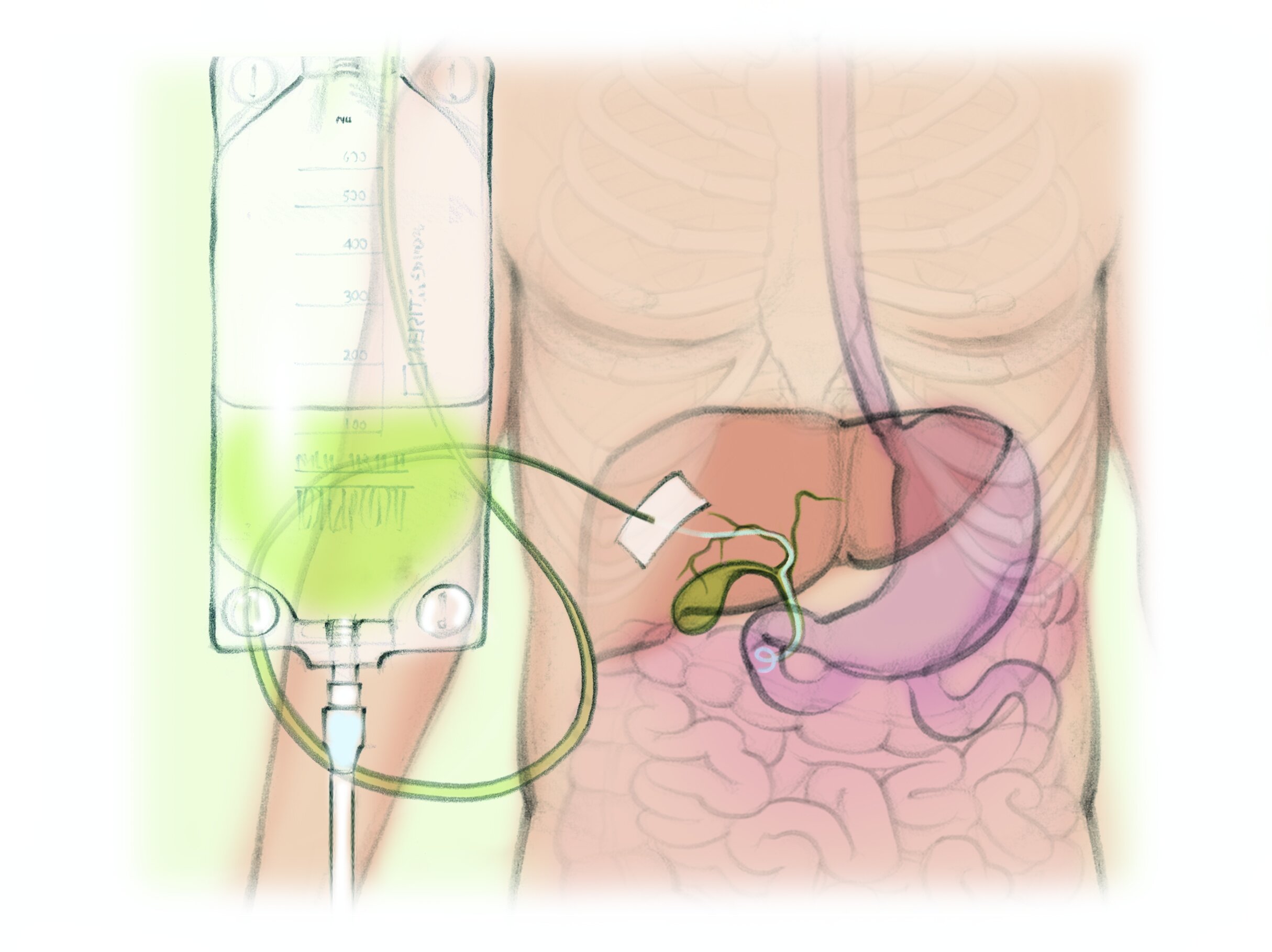What are blocked bile ducts?
Your liver makes a thick yellow-green liquid called bile to help you digest the fat in food. The bile flows through channels called bile ducts. The gallbladder stores the bile.
Bile ducts can get blocked by gallstones, infection, swelling, or cancer. When bile ducts get blocked, the bile can back up and make you sick. It can cause itching, yellow eyes, yellow skin, right upper belly pain, and life-threatening infection.
A bile duct drain is a thin plastic tube placed into the bile ducts to let the bile flow past the blockage or out of the body. A stent is a woven metallic tube that can be used to open blocked large bile ducts.
How are blocked bile ducts treated?
The clinician numbs the skin over the right upper belly. They slide a drain through a small hole in the skin. They use ultrasound and/or moving x-rays to guide the drain into the bile ducts. The drain is connected to a bag to collect the bile.
If your clinician does not expect the narrowing to get better or go away, they may recommend a metallic stent. Metallic stents are usually permanent. The stent slides in over a flexible wire through the same hole used for the drain. The benefit of the metallic stent is that it opens the blocked bile duct so the bile can drain normally and not into a bag. Usually the clinician will leave a drain through the stent at first then remove it later.
Bile Duct Drains & Stents
1. The clinician numbs the skin over the right upper belly
2. The clinician slides the drain through the skin and into the bile ducts.
3. The drain is connected to a bag to collect the bile.
What are the risks?
Bile drains and stents are generally placed safely when done by a specialist.
In 1 of 10 people, the procedure is not successful in draining the bile or opening the blocked bile ducts.
Temporary fever after the procedure is common, occuring in up to 2 out of 3 people.
Major complications happen in 4 - 10 in 100 people. They include bleeding, severe infection, or swelling of the pancreas (called “pancreatitis”).
What are the alternatives?
Alternative 1 Not placing a bile duct drain or stent. If you have an infection, it may improve with germ-fighting medicines called antibiotics, but it may not. The infection could make you sicker and even lead to death. If your symptoms are due to a bile duct blockage, it could get worse.
Alternative 2 ERCP. A small camera is passed through the mouth and into the stomach and intestines to look at where the bile drains. Some bile ducts can be opened from this approach. If ERCP does not work, you may need a bile duct drain.




